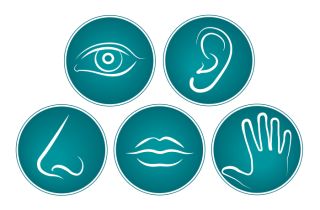Unit 3 Overview: Sensation and Perception
2 min read•june 18, 2024
Dalia Savy
AP Psychology 🧠
334 resourcesSee Units
From the College Board
👀 Developing Understanding of this Unit
According to College Board, "Psychologists study sensation and perception to explain how and why externally gathered sensations and perceptions impact behaviors and mental processes 🧠 Using input from several anatomical structures, the sensations we perceive process and interpret information about the environment 🌳 around us and our place within it.
This results in perceptions that influence how we think and behave. In this way, sensation and perception provide a bridge between the biological and cognitive perspectives, offering aspects of both for explaining how we think and behave.
🔎 Guiding Questions
- How do we process the information we receive from our environments?
- How does our interpretation of the information we receive from the environment influence our behaviors and mental processes?
Contextualizing the Unit
This unit covers what psychologists have learned about how we perceive the world around us. It goes in-depth about your 5 senses and what they tell you about your surroundings. Specifically, the field of psychophysics is described in this chapter—that's the study of the difference between the physical characteristics of our surroundings and our psychological interpretation of them. About 6-8% of the exam is about sensation and perception.
Key Facts
🤓 Psychologists to Know
Gustav Fechner
Gustav Fechner studied our awareness of faint stimuli, such as feeling one drop of water fall onto our face, and derived the term absolute threshold.
David Hubel + Torsten Wiesel
Contributing to this unit, these two neurophysiologists studied the visual system and found feature detectors in the occipital lobe’s visual cortex. They won a Nobel Prize together for their discovery of these cells.
Ernst Weber
Ernst Weber studied our difference threshold and is known for Weber’s Law.
📝 Vocabulary
| Sensation | Bottom-up Processing | Top-down Processing | Perception |
| Gestalt | Sensory Transduction | Absolute Threshold | Subliminal |
| Signal Detection Theory | Difference Threshold | Weber's Law | Sensory Adaptation |
| Perceptual Set | Schemas | Context Effects | Selective Attention |
| Cocktail Party Effect | Inattentional Blindness | Change Blindness | Figure-Ground Relationship |
| Depth Perception | Monocular Cues | Binocular Cues | Retinal Disparity |
| Perceptual Constancy | McGurk Effect | Wavelength | Hue |
| Amplitude | Cornea | Pupil | Iris |
| Lens | Accommodation | Retina | Rods |
| Cones | Feature Detectors | Optic Nerve | Young-Helmholtz Trichromatic Theory |
| Opponent Process Theory | Audition | Pinna | Eardrum |
| Cochlea | Basilar Membrane | Semicircular canals | Vestibular Sacs |
| Sensorineural Hearing Loss | Conduction Hearing Loss | Place Theory | Frequency Theory |
| Gustation | Olfaction | Somatosensation | Gate-Control Theory |
| Vestibular Sense | Kinesthesis | Proprioception | Sensory Interaction |

Image Courtesy of Live Science
Browse Study Guides By Unit
🔎Unit 1 – Scientific Foundations of Psychology
🧠Unit 2 – Biological Basis of Behavior
👀Unit 3 – Sensation & Perception
📚Unit 4 – Learning
🤔Unit 5 – Cognitive Psychology
👶🏽Unit 6 – Developmental Psychology
🤪Unit 7 – Motivation, Emotion, & Personality
🛋Unit 8 – Clinical Psychology
👫Unit 9 – Social Psychology
🗓️Previous Exam Prep
📚Study Tools
🤔Exam Skills

Fiveable
Resources
© 2025 Fiveable Inc. All rights reserved.